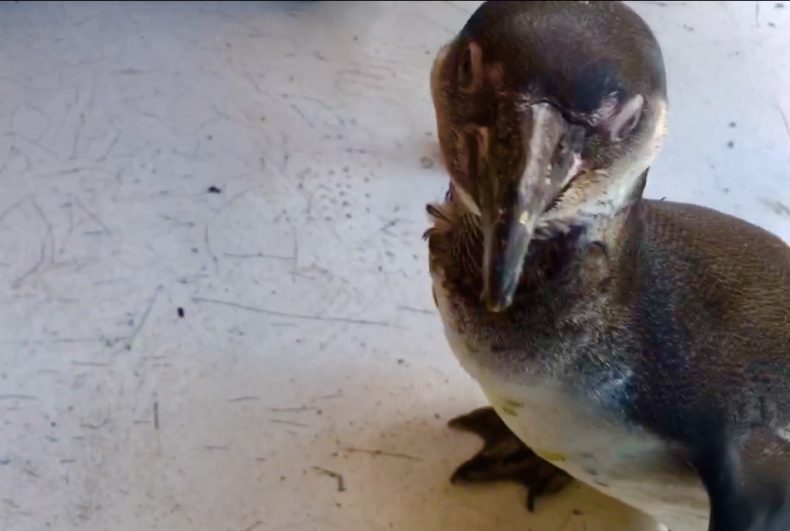 It has been said that penguins appear to be wearing tuxedos—crisp and elegant in their blacks and whites. This is not so of Humboldt penguins. If Humboldt penguins are wearing tuxedos, then they have been wearing them to jump trains for a couple of weeks, sleeping atop coal slag or down in the dingy corners of yawning boxcars. The birds are gray and ragged around the edges, their white chests flecked as if with cinder burns. And their eyes look like the last edge of a hangover receding—bloodshot, merry, curious. They look like they have seen some things.
It has been said that penguins appear to be wearing tuxedos—crisp and elegant in their blacks and whites. This is not so of Humboldt penguins. If Humboldt penguins are wearing tuxedos, then they have been wearing them to jump trains for a couple of weeks, sleeping atop coal slag or down in the dingy corners of yawning boxcars. The birds are gray and ragged around the edges, their white chests flecked as if with cinder burns. And their eyes look like the last edge of a hangover receding—bloodshot, merry, curious. They look like they have seen some things.
These are the eyes that peer up at me through the wire-grate door of an upended cat carrier, on the deck of a boat, 35 miles offshore of Chile in the southeast Pacific Ocean.
I look back, my own eyes bloodshot from rising at 4 a.m. There are practical reasons for this: The Chilean biologists and veterinarians aboard wanted to beat the wind that drives this massive body of water into turbulent expanse of rolling, aqueous hills. We are here to release three seabirds including this one—recently healed from a period of convalescence at a wildlife rehabilitation center in the industrial city of Antofagasta.
Dr. Carlos Guerra comments on the calmness of the weather. The sun is unblinkingly bright, the sea overexposing the sky with its glitter. I squint against the glare. Calm is not the word I would use to describe these conditions. When one of the other biologists had woken me from a Dramamine induced slumber below decks, objects were flinging off the counters in the galley as the boat yawed wildly back and forth. I had to brace myself in the doorway on the way out to the stern. From my current perch against the cabin wall, the place where ocean blurs into sky vanishes and reappears, vanishes and reappears, as the gunwale bobs up and down.
Carlos shows me the GPS. Where he taps, it suggests that the seafloor has plunged thousands of meters, our little craft suspended above the earth by a few kilometers. Just as suddenly, we are passing over a mount a mere 125 meters below the surface. There are whole worlds down there, beneath the sparkle, in that darkness. The thought overwhelms me as the sea swells and sags, a rise and fall of breath. A great heaving. A stirring as if wakening. The penguin stirs, too—perhaps feeling all that bigness so near.
The veterinarian, Andy, gently tilts the carrier down, releases the door. The penguin climbs out, looking improbable and wild on the white fiberglass. He appears almost casual. His claws click on the hard surface as he strolls around the men’s feet. He walks to the doorway and pauses there, peering into the galley, taking measure of the upholstery and snacks and Chilean wine, getting an eyeful of our place the same way we gawp at his. Seeing the sights, maybe. He saunters back out, making for the gunwale. Andy steps out of his shoes and pads after the penguin barefoot. The penguin, sensing pursuit, leans into his waddle, accelerates. Andy scoops him up under the armpits, stretches him out over the water, opens his hands. We watch the penguin as he arrows around the boat through the clear water. The men exclaim when he appears in this wave, and then that one on the other side.
And then he is gone, soaring somewhere beneath our unsteady feet.
Click here to see a video
One thought on “We walk on waves; they fly below”
Comments are closed.